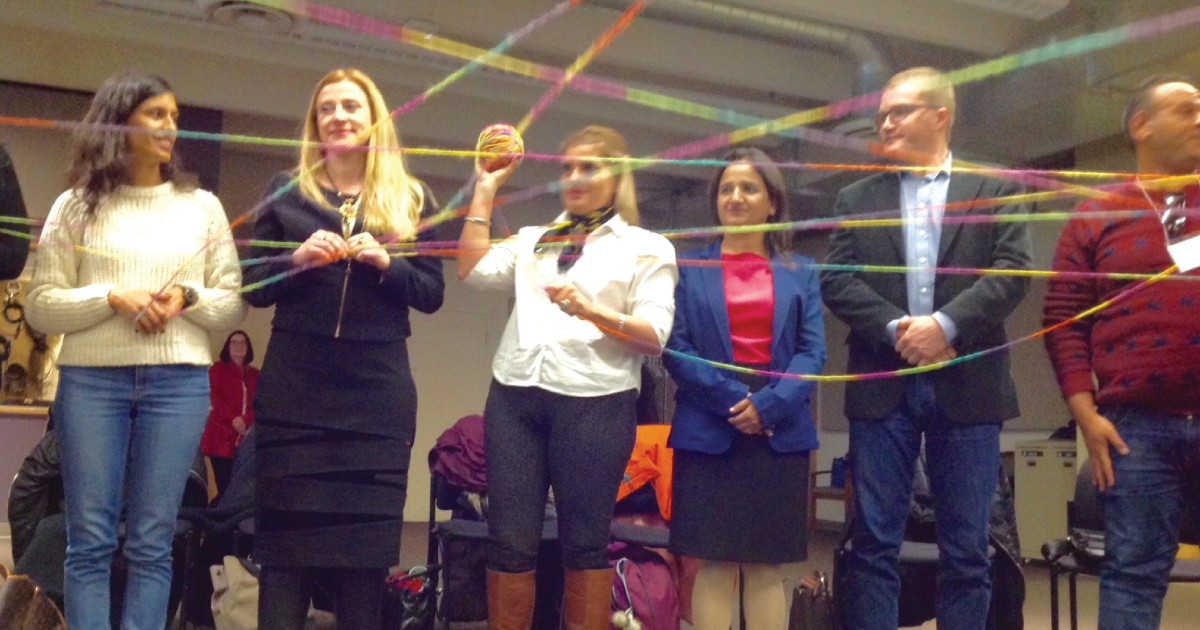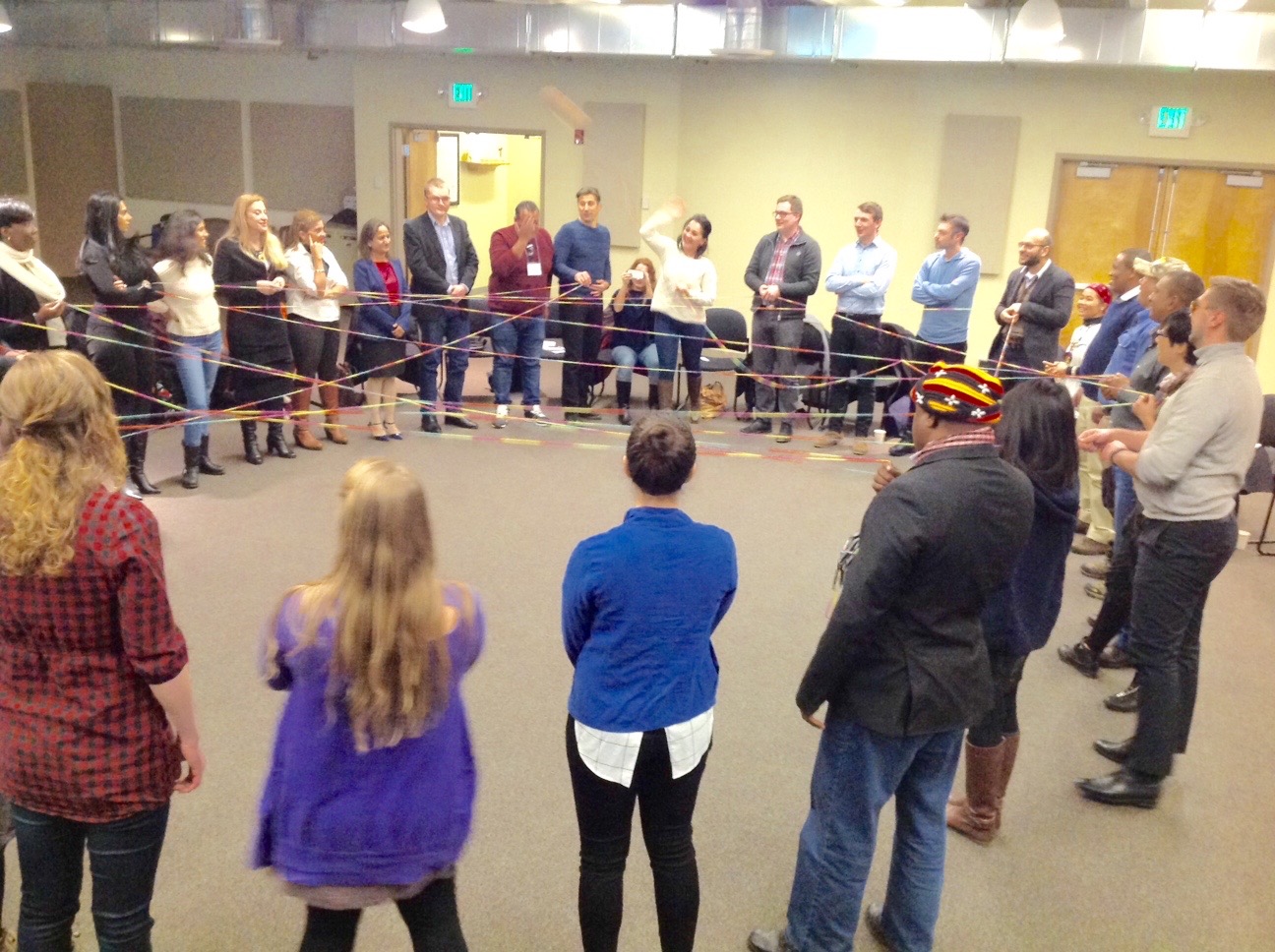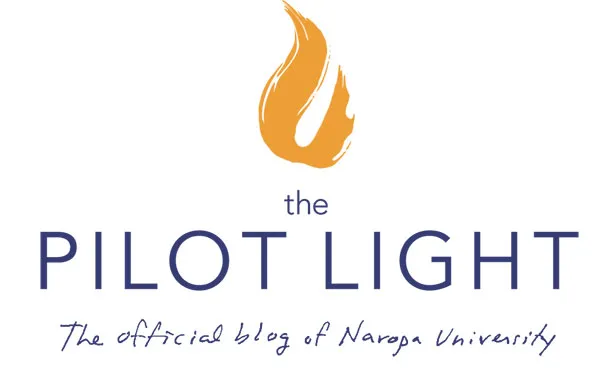 Bureau of Educational and Cultural Affairs International Visitor Leadership Program Visits Naropa to hear about the work of Art Therapy Students in Cambodia.
Bureau of Educational and Cultural Affairs International Visitor Leadership Program Visits Naropa to hear about the work of Art Therapy Students in Cambodia.
Blog by Sue Wallingford, Professor in the Graduate School of Counseling Psychology
On Feb 5th, 2016, Naropa University hosted 25 international visitors from the Bureau of Educational and Cultural Affairs International Visitor Leadership Program organized by the state department to learn more about the crime of human trafficking. The group, comprised of lawyers, administrators, managers, police officers and other officials represented parts all over the globe where human trafficking has reached epic proportions.
Together for three weeks, this group stopped in Boulder for a day to learn about the art therapy training that my students and I did with the Cambodian Women’s Crisis Center, a shelter in Sisophon Cambodia that aims to provide therapy and reintegration services to women and children survivors of sex trafficking.
In a two-hour presentation, we shared stories about our work, what we learned about the sex trafficking industry in Cambodia, answered questions and engaged in creative activities to illustrate the healing potential of art therapy.
Following is some tidbits from the presentation and statistics on the problem of human trafficking both nationally and internationally.

“Nada, Croatia, commitment,”
“Snorri, Iceland, solidarity,”
“Amer, Iraq, love,”
“Evelyn, Kenya, inspiration,”
“Sidhu, Nepal, patience,” …..
“…Hieu, Vietnam, peace.
As the multicolored ball of yarn traveled from one international visitor to the next, each participant spoke their name, country and one word that described their experience of being together. It felt both heartening and heartbreaking as each voice entered the circle. Heartening, that there are so many caring individuals standing in solidarity against the crime of human trafficking and heartbreaking that this crime has reached such epic proportions all over the globe.
I would highlight this experience of standing in a circle with my students and officials from all over the world as one of the most meaningful moments of my life. Together we shared and created a vision of a connected world where all people are safe, peaceful and free of suffering.
This activity of creating a “web of solidarity” transported me back to when we did this activity on our last day with the Cambodian Women’s Crisis Center in Sisaphon. There too was a spark of hope as we witnessed the ball of yarn make its way from one person to the next, connecting us with one thread, with the intention to never forget our time together and our dedication to end the suffering caused by this growing crime.
According to Polaris Project these are the most recent statistics on human trafficking:
Although slavery is commonly thought to be a thing of the past, human traffickers generate hundreds of billions of dollars in profits by trapping millions of people in horrific situations around the world, including here in the U.S. Traffickers use violence, threats, deception, debt bondage, and other manipulative tactics to force people to engage in commercial sex or to provide labor or services against their will. While more research is needed on the scope of human trafficking, below are a few key statistics:
- The International Labour Organization estimates that there are 20.9 million victims of human trafficking globally.
- 68% of them are trapped in forced labor.
- 26% of them are children.
- 55% are women and girls.
- The International Labor Organization estimates that forced labor and human trafficking is a $150 billion industry worldwide.
- The U.S. Department of Labor has identified 136 goods from 74 countries made by forced and child labor.
- In 2014, an estimated 1 out of 6 endangered runaways reported to the National Center for Missing and Exploited Children were likely child sex trafficking victims.
- Of those, 68% were in the care of social services or foster care when they ran.
- There is no official estimate of the total number of human trafficking victims in the U.S. Polaris estimates that the total number of victims nationally reaches into the hundreds of thousands when estimates of both adults and minors and sex trafficking and labor trafficking are aggregated.
Sex trafficking is a form of modern slavery that exists throughout the United States and globally.
Sex traffickers use violence, threats, lies, debt bondage, and other forms of coercion to compel adults and children to engage in commercial sex acts against their will. Under U.S. federal law, any minor under the age of 18 years induced into commercial sex is a victim of sex trafficking—regardless of whether or not the trafficker used force, fraud, or coercion.
The situations that sex trafficking victims face vary dramatically. Many victims become romantically involved with someone who then forces or manipulates them into prostitution. Others are lured in with false promises of a job, such as modeling or dancing. Some are forced to sell sex by their parents or other family members. They may be involved in a trafficking situation for a few days or weeks, or may remain in the same trafficking situation for years.
Victims of sex trafficking can be U.S. citizens, foreign nationals, women, men, children, and LGBTQ individuals. Vulnerable populations are frequently targeted by traffickers, including runaway and homeless youth, as well as victims of domestic violence, sexual assault, war, or social discrimination.
Sex trafficking occurs in a range of venues including fake massage businesses, via online ads or escort services, in residential brothels, on the street or at truck stops, or at hotels and motels.
To learn more about the work of Sue Wallingford the art therapy students go to:
www.ncasi.wordpress.com




